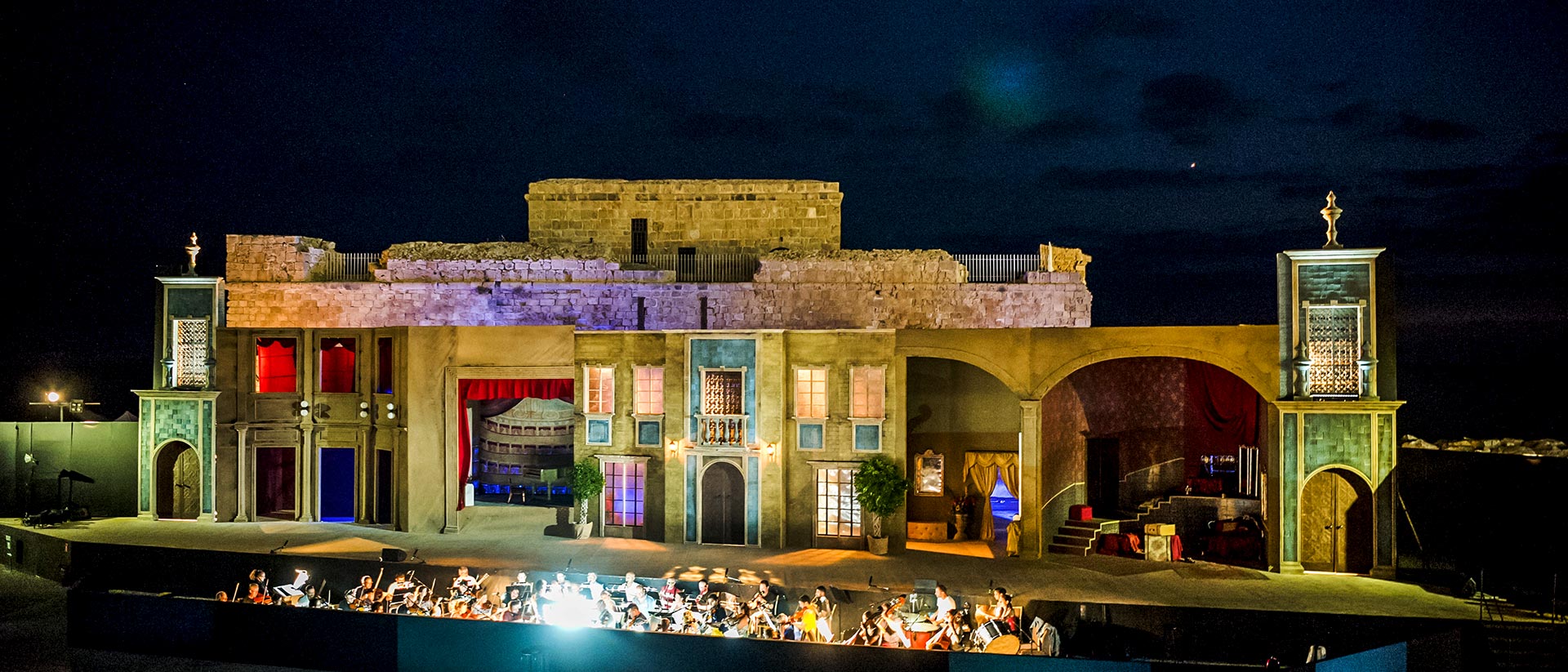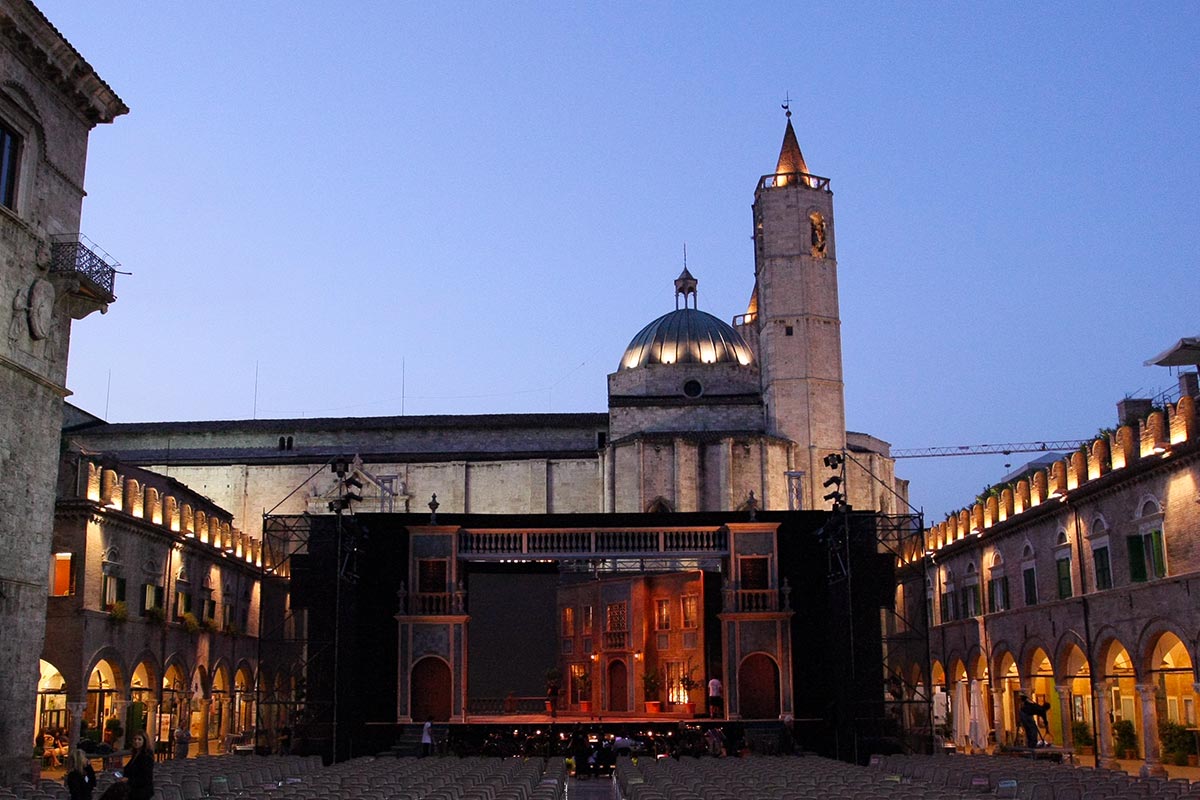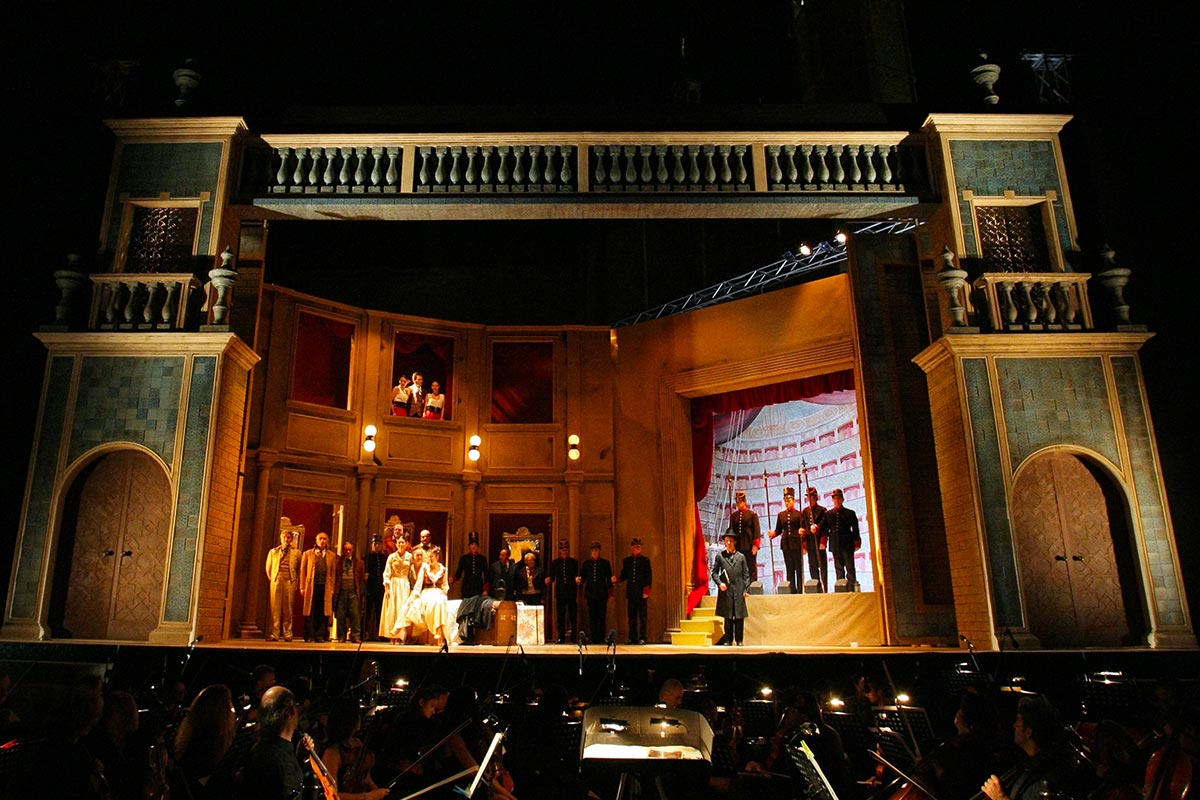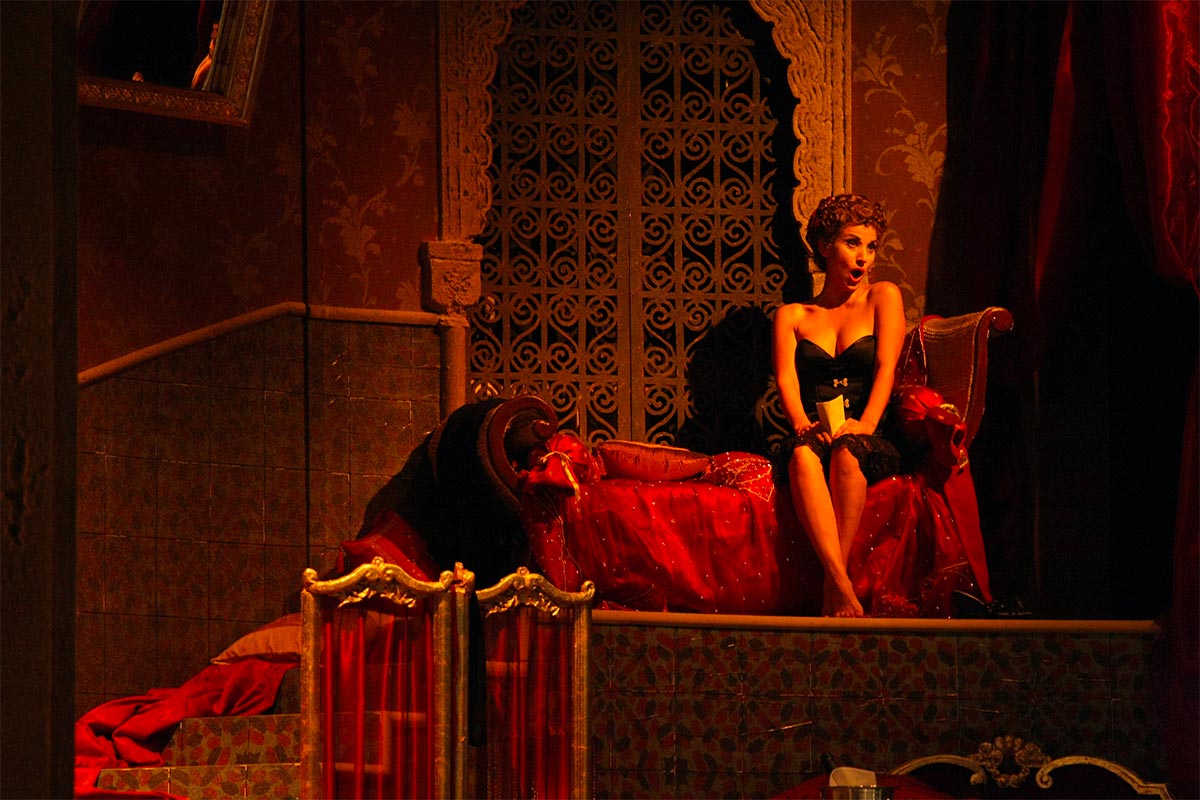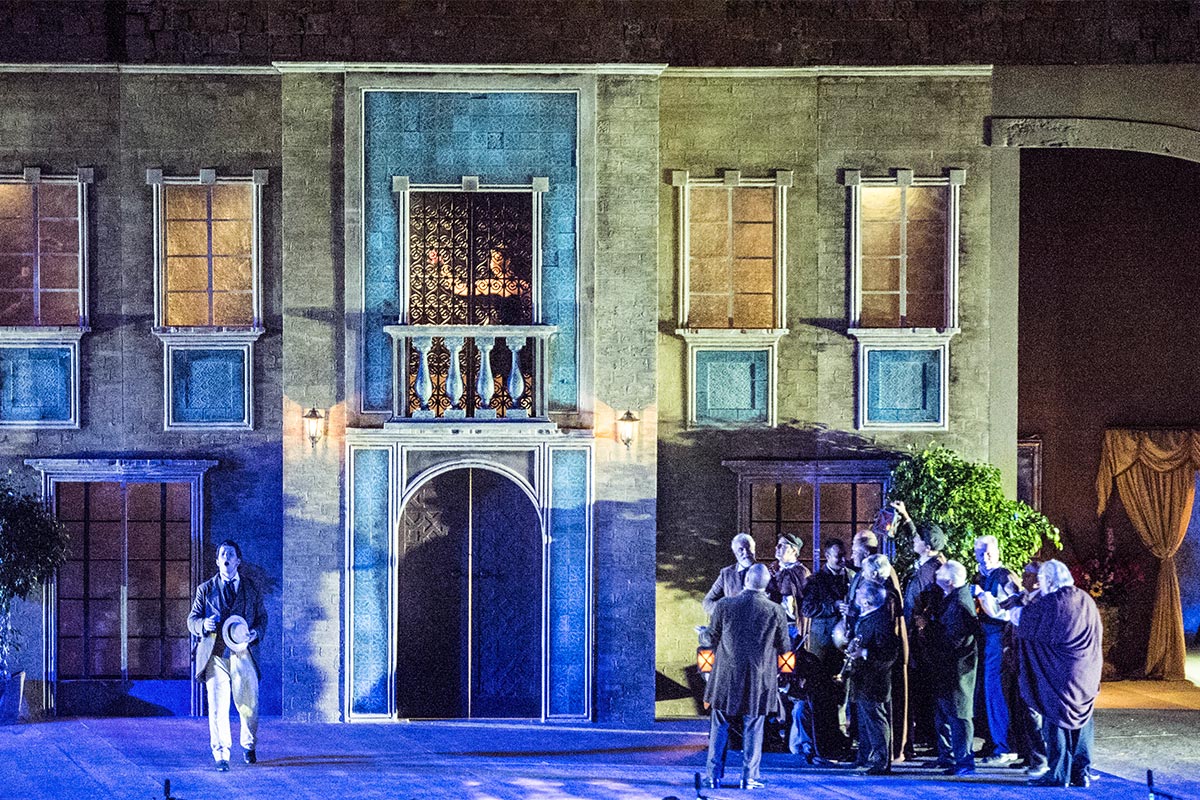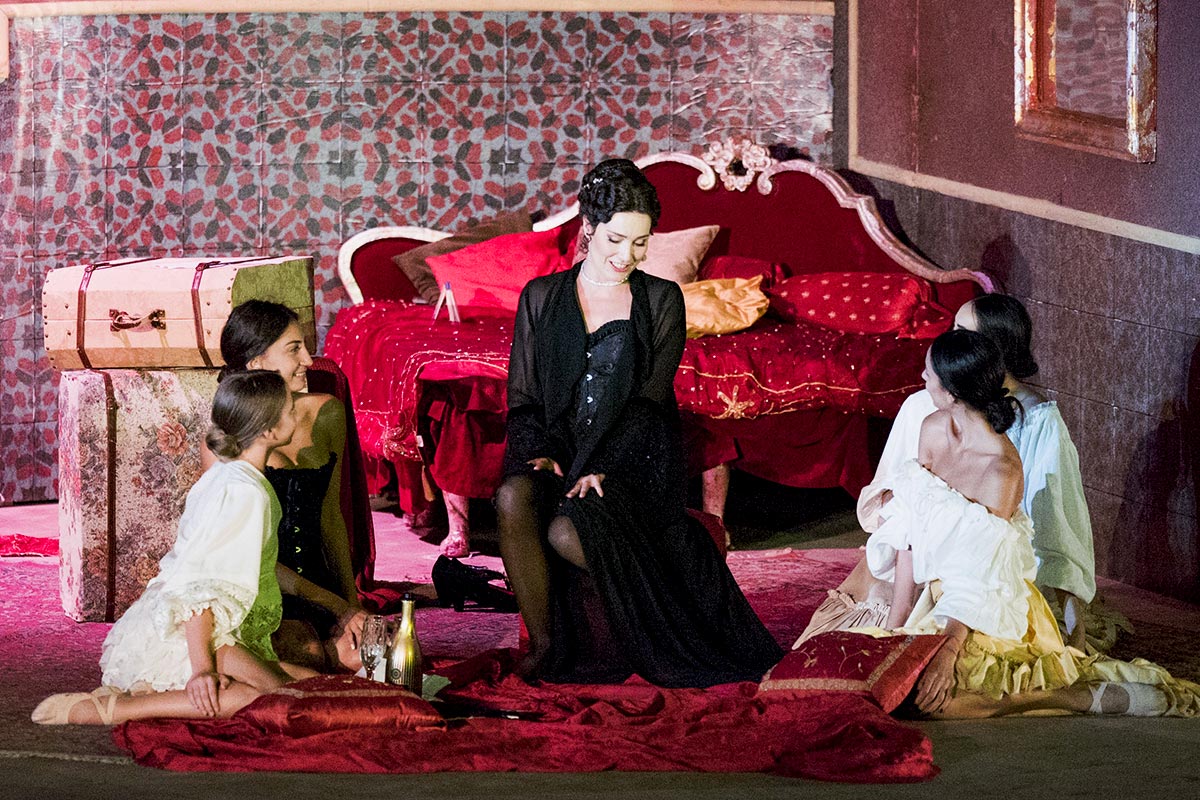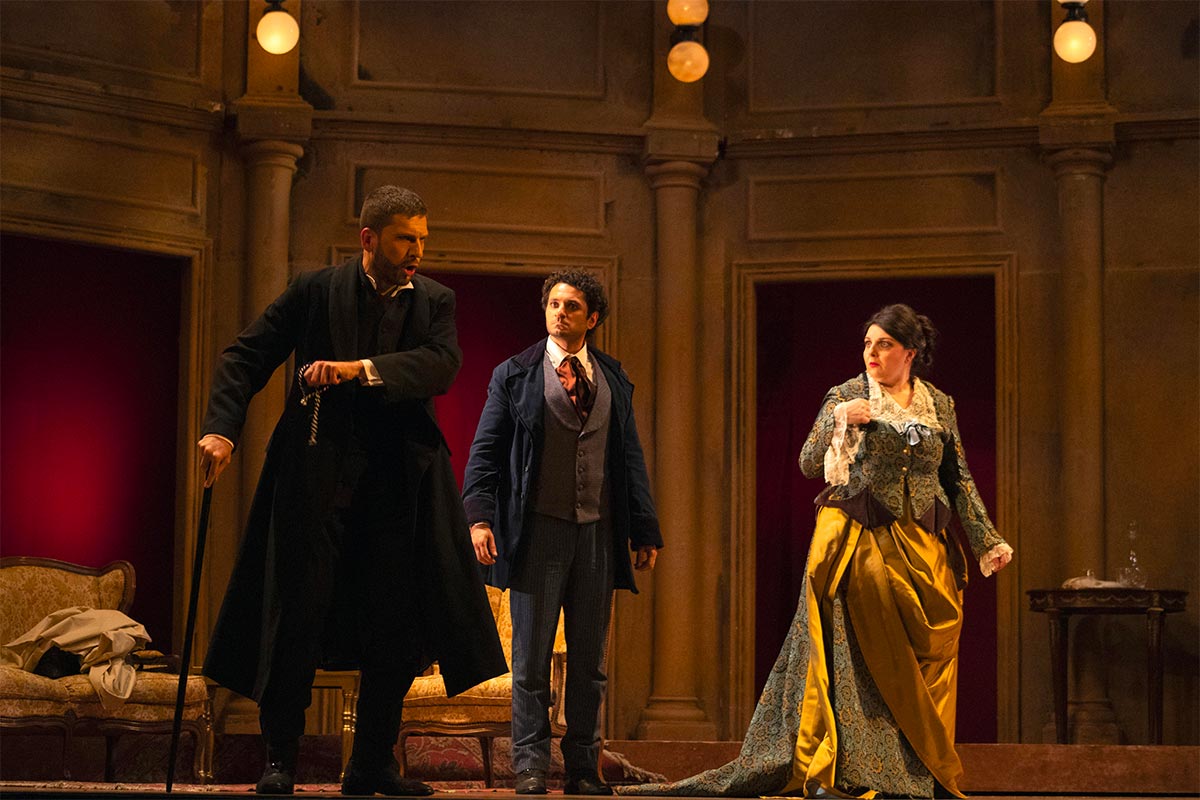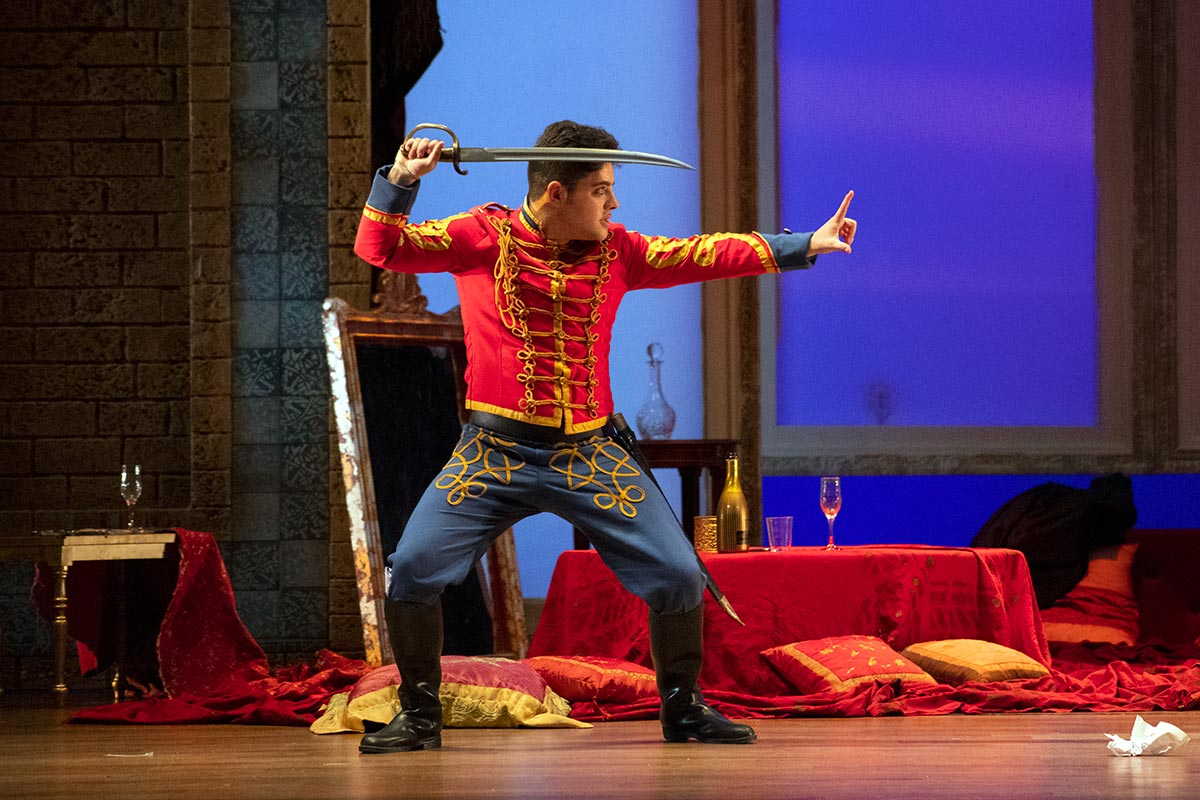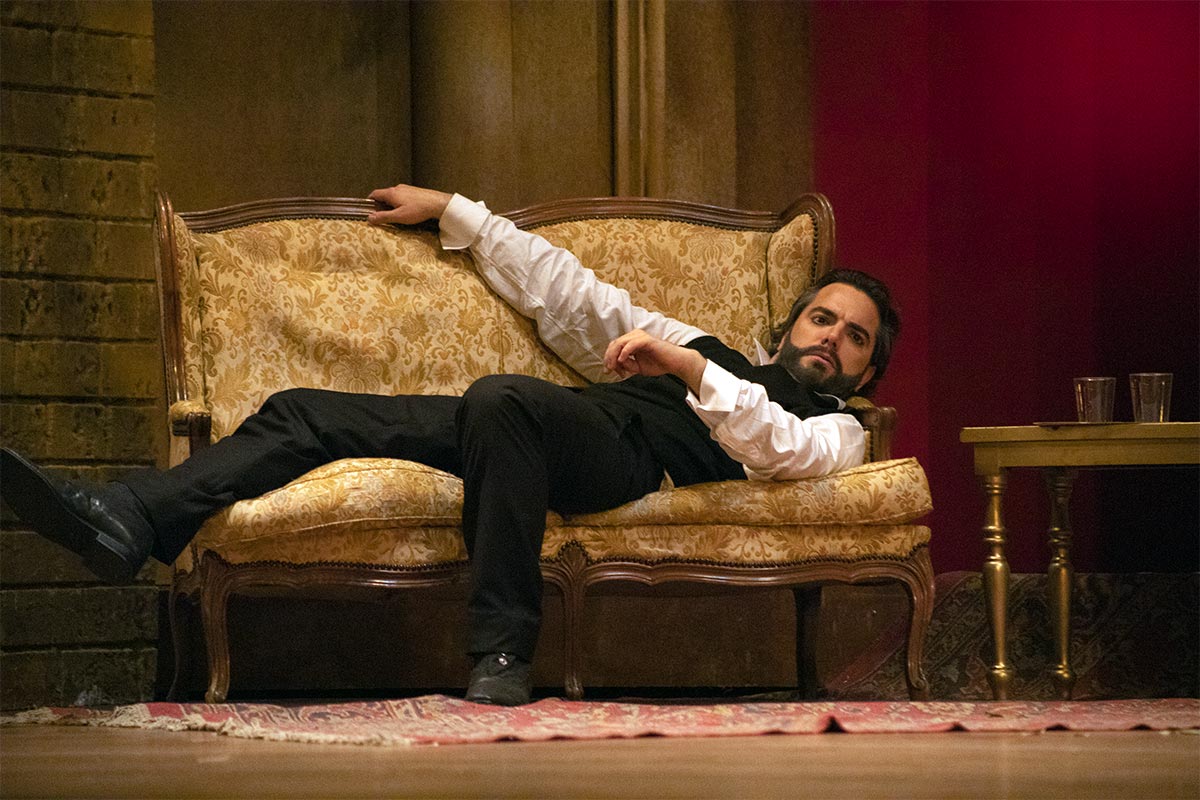Gioachino Rossini
Il barbiere di Siviglia
The debut as director of Rossini’s masterpiece will take place in 2007 with an imposing set designed to be staged in the wonderful Piazza del Popolo in Ascoli Piceno.
Lev will direct Il barbiere di Siviglia for a second and third new production only several years later, on the occasion of the twentieth anniversary of the Festival Aphrodite of Pafos in Cyprus and on the one hundred and fiftieth anniversary of the death of the genius from Pesaro in 2018 and the following year, as part of the Festival Granda, at the Gran Teatro Nacional del Perù in Lima.
cast

Marco Berdondini

Jens Georg Bachmann

Ivan Lopez Reynoso

Domenico Balzani

Alexey Bogdanchikov

Gurgen Baveyan

Paola Antonucci

Anna Werle

Chiara Amarù
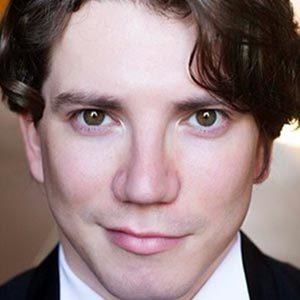
Yaroslav Abaimov
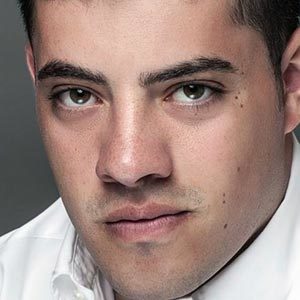
Pietro Adaíni

Romano Franceschetto

Pablo Ruiz

Alessandro Abis

Marko Mimica

Suzana Savic

Elli Koutsouli
creators
Gioachino Rossini (1792–1868) was the world’s foremost opera composer in his day. Over the course of just two decades, he created more than 30 works, both comic and tragic, before retiring from opera composition at the age of 37. Cesare Sterbini (1784–1831) was an official of the Vatican treasury and a poet whose literary fame rests squarely on Barbiere. Pierre Augustin Caron de Beaumarchais (1732–1799) was the author of the three subversive Figaro plays, of which Le Barbier de Séville (1775) was the first.
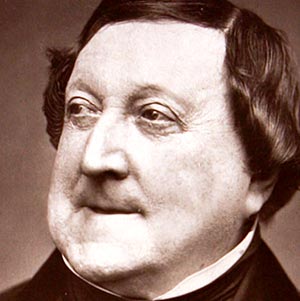
Gioachino Rossini
Stage director
Costume designer
set designer
lighting designer
producers
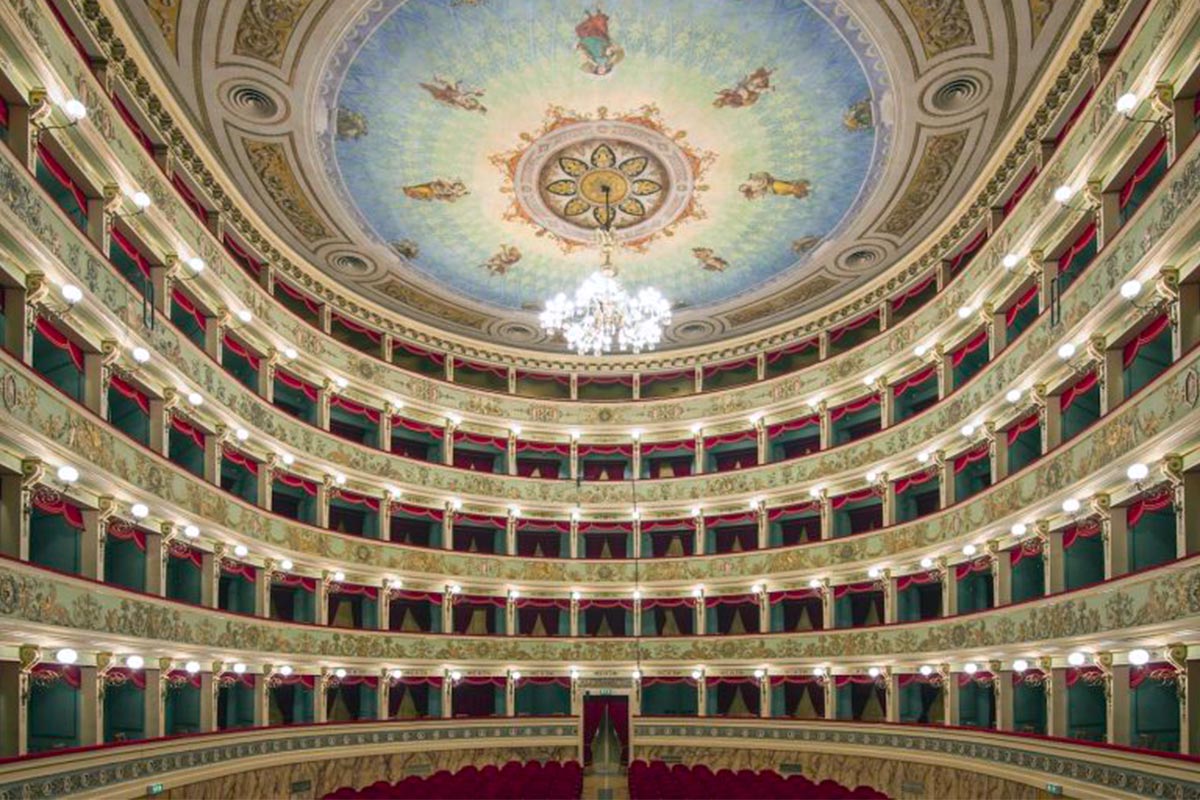
The Ventidio Basso theater is the communal theater, concert hall, and opera house, located on via del Trivio, in front main cloister of the church of San Francesco, near piazza del Popolo, in the city of Ascoli Piceno region of Marche, Italy. The exterior was erected in neoclassical-style, with grand interiors.
Ascoli Piceno had a communal theater since 1579, located at the site of the palazzo Anzianale.
The theater is named by Ventidio Basso, local made prisoner during the Social Wars of the Roman Republic. He became a military and political leader for Julius Caesar and Marc Antony. Ventidio has honored with a triumph for a victory against the Parthians in 38-39 B.C.
The Gran Teatro Nacional del Perú (Grand National Theater of Peru) is a multi-purpose theatre and concert hall in Lima, Peru. It is part of the Cultural Tridium, flanked by the National Library of Peru and the Museo de la Nación.
The theatre was inaugurated on 23 July 2011 . It has a capacity of up to 1500 people, and uses the latest technology in acoustics and sound engineering to support performance genres ranging from opera, philharmonic orchestras, pop stars, Broadway shows and more. The building includes rehearsal rooms, dressing rooms, restaurants, cafeteria, library and rooms for various types of events.
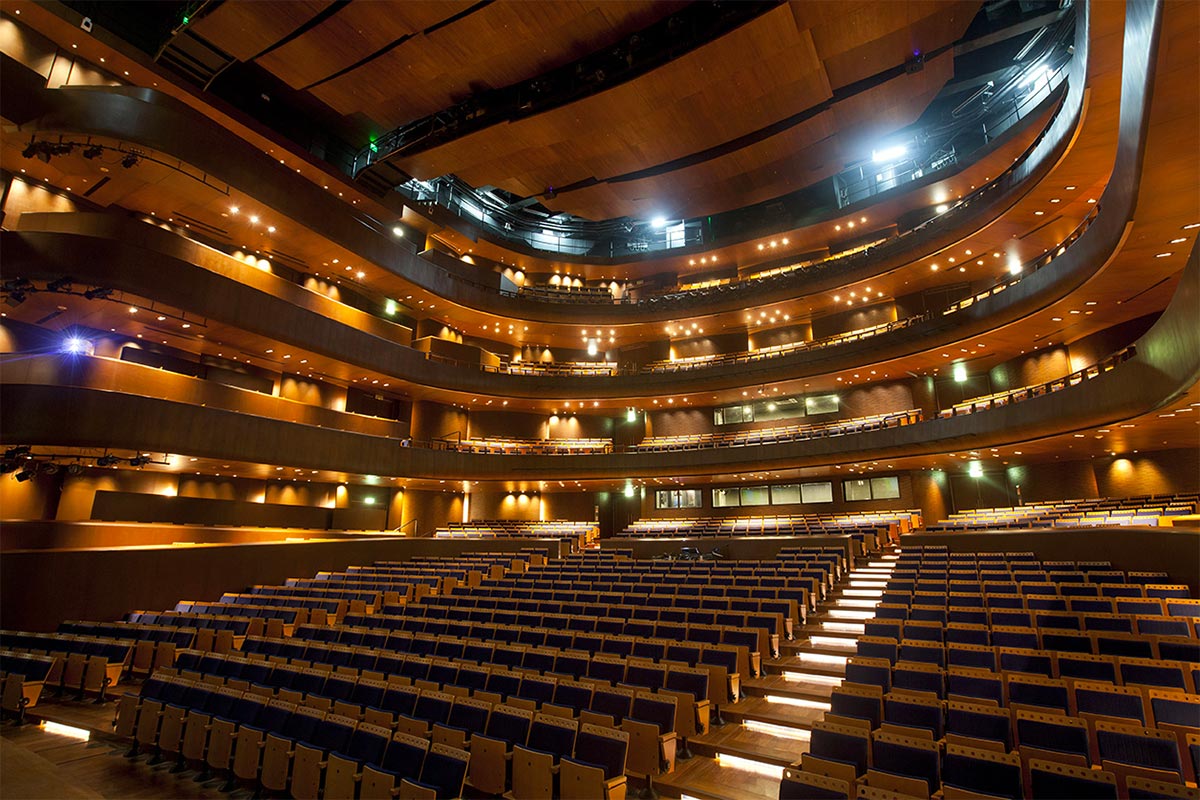
photos & videos
Il barbiere di Siviglia
Rossini’s Il barbiere di Siviglia
Gran Teatro Nacional del Perù
notes
Since the very first listening and first careful reading of Rossini’s masterpiece, I felt the need to relocate the chaotic events of this special day for Figaro and his companions, in an environment that could help the booklet and the music to have full vent.
Without wishing in any way to detract anything from the daring and exciting development of the story, I could not help focusing my attention on the music, and therefore on its author.
Rossini lived most of his life in the city of Paris, as a “bon vivant” lover of good food and beautiful women. It is easy to imagine Rossini as a frequent visitor to those historic spots known as “Café Chantant”.
First seen in Paris towards the end of the 18th century, by the time the Barber of Seville debuted in Rome at the Argentina theater in 1816, the café chantant had already reached an important social and cultural relevance, spreading later also to other European countries such as England, Austria, Germany, Russia and Spain.
From the “Cafés” to the “Barber” the step is short: the coffee-theater, Rosina’s dressing room, the rehearsal room and the game is up! Therefore, in a time just before the third French republic, in a mysterious, fascinating and mellow Seville recalling the wonderful paintings of Fourny: Bartolo becomes the impresario, Berta the seamstress with secret artistic ambitions, the count a wealthy client and Rosina the jewel in the crown of the show and … Figaro? Well. Figaro is and will always be: “il faccendier di casa” “the factotum of the house”.
